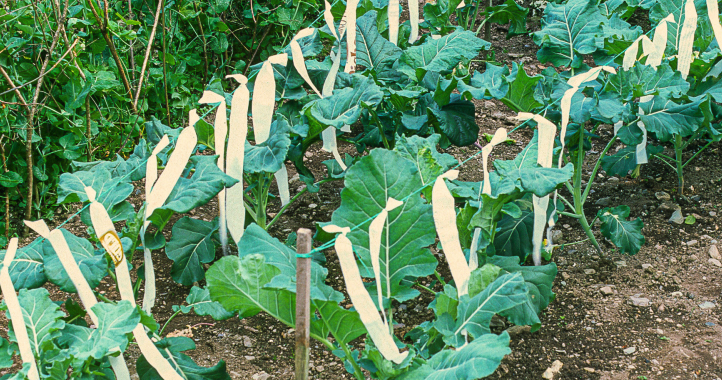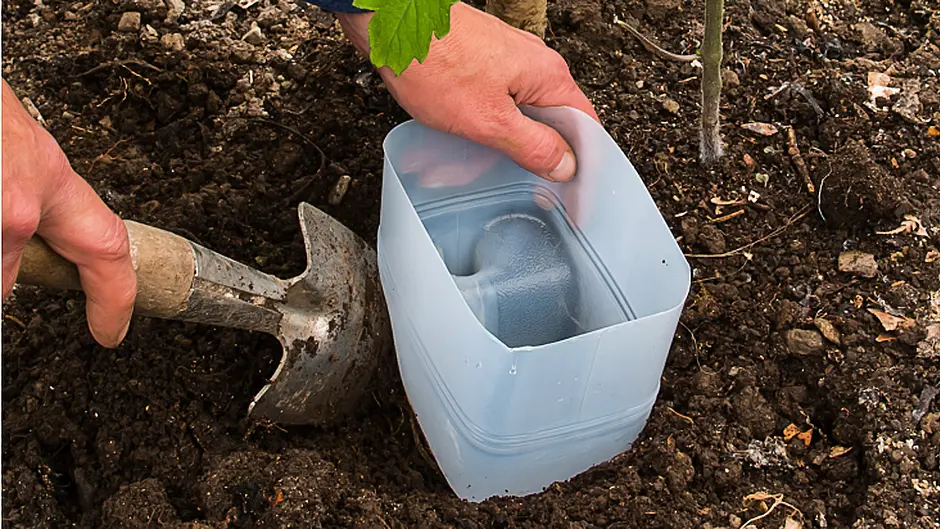BY JOYCE RUSSELL
A GARDEN is the perfect place to practice some good recycle and reuse principles. There is a natural cycle of growth and decay for all growing things, and a garden has many obvious illustrations of this. Here are some simple suggestions:
• Make compost – buy a wooden bin, or make one, and fill it in layers. This is the best way to turn waste organic material into great soil food.
• Make leafmould – collect fallen leaves and contain them in a pile to rot slowly over a couple of years. Leafmould is great in potting mixes and it helps build good structure in the soil.
• Save seeds – read up a bit on which seeds are good to save and how to save them. Some seeds are easy and it is always fun to grow on a good strain and see how it performs.
On the other hand...
Some man-made materials can be slow to break down and some plastics don’t change – they just make smaller and smaller particles that are as bad, if not worse, than the original object. We need to think how to act so we aren’t adding to the plastic waste problem. First, stop and think before you buy unneeded plastic; second, stop for a moment before you throw something away, or add it to the recycling bin. Think: is there any way I can use this again? This helps us consume less, save money and reduce the amount of waste that goes into the bin.
Some simple reuse ideas ...
Large plastic drink bottles.
• These fit on the top of bamboo canes and rattle in any puff of wind to frighten off birds. Use them to protect brassicas from pigeons during the winter.
• Put bottles on top of poles before throwing netting over the top – this protects netting from rips and snags.
• Cut the base off the bottle and remove the lid. This makes a simple mini cloche to push down into the soil and protect a small plant as it becomes established.
Strong plastic sheet or large bags
• Use to cover a compost heap or manure pile to protect from winter rain.
• Cut into strips and tie these onto a length of strong string. These ‘flappers’ can be stretched across rows of plants or between branches of fruit trees to deter birds.
• Use to cover empty beds so all the nutrients don’t wash away.
• Cut into 20cm squares and use these to make collars to repel root fly around brassicas.
 Cut compost bags into strips to make flappers to protect crops from birds.
Cut compost bags into strips to make flappers to protect crops from birds.
Plastic tubs and containers
• Make holes in the bottom, if needed, and use as pots to raise seedlings. Deep plastic fruit punnets are perfect for raising peas and, with care, they can be washed and reused again and again.
• If a bucket loses its handle, or splits, you can make extra holes in the base as needed and use the bucket as a large container for growing flower or vegetable plants. Push some canes in the compost and reuse a large clear plastic bag over the top – you have a protected growing environment for growing tender plants.
• Large clear plastic storage containers can make excellent cloches. It doesn’t matter if they have a crack or two. Invert the tub over a young plant and use tent pegs, or equivalent bent bits of wire, to hold the container in place.
Plastic milk bottles
• Cut off the base and remove the lid. Bury the container, lid end down, next to a plant that likes lots of water. You simply fill the cut bottle with water and it delivers moisture down to the roots where it is needed.
• Cut bottles into strips to use as plant labels. Write on these with a permanent marker and you can scrub this off for reuse.
Fruit nets
• Strong nets, that fruit is sold in, can be used to support heavy fruits so they don’t snap plant stems. My grandchildren supported a giant tomato in a ‘hammock’ and it ripened at 900g thanks to its unusual support mechanism!
• Garlic and onions can be stored in nets. Make sure plenty of air can circulate.
And then there is wood
• Salvaged wood can be used in the same way as new – you may just have to think and design a bit more than if you are buying new timber. Avoid timber that is treated with poisonous chemicals – untreated oak sleepers are better than ones heavily impregnated with creosote.
• Boards can be used to edge beds, make shelves or raised beds, and create walkways to avoid trampling across muddy soil.
• Battens and posts have many uses in making fences, gates, plant supports, frames for covering beds etc.
• Drawers make excellent propagation frames. Add a heated cable in the base and cover with sand. Pots stood on the sand will receive gentle heat from the base.
This article originally appeared in The Southern Star's Autumn Home and Garden supplement. Subscribers can read the full supplement via our ePaper.








